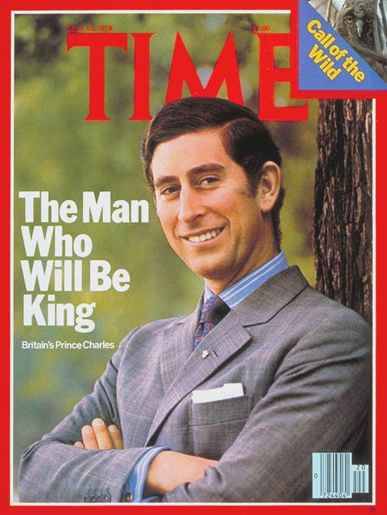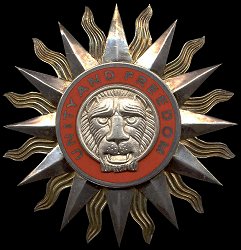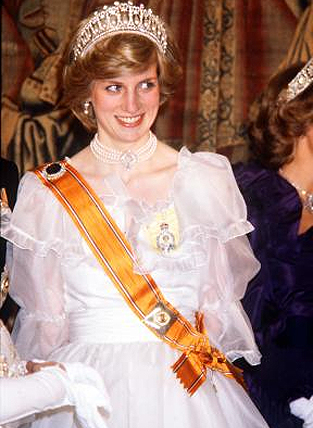 |
| Charles, HRH the Prince of Wales, KG, KT, GCB, OM, AK, QSO |
 Prince Charles was born on 14 November 1948, the eldest child of the
then Princess Elizabeth and the Duke of Edinburgh. At birth he was
second in line to the throne and styled HRH Prince Charles of
Edinburgh. On the death of his grandfather, George VI, in 1952 and the
accession of his mother to the throne, Charles became heir apparent and
took the titles Duke of Cornwall, Duke of Rothesay, Earl of Carrick,
Baron of Renfrew, Lord of the Isles and Prince and Great Steward of
Scotland. He was created Prince of Wales and Earl of Chester on 26 July
1958, though he was not invested until ten years later. I shall blog
about Charles' investiture and the title Prince of Wales another time.
Prince Charles was born on 14 November 1948, the eldest child of the
then Princess Elizabeth and the Duke of Edinburgh. At birth he was
second in line to the throne and styled HRH Prince Charles of
Edinburgh. On the death of his grandfather, George VI, in 1952 and the
accession of his mother to the throne, Charles became heir apparent and
took the titles Duke of Cornwall, Duke of Rothesay, Earl of Carrick,
Baron of Renfrew, Lord of the Isles and Prince and Great Steward of
Scotland. He was created Prince of Wales and Earl of Chester on 26 July
1958, though he was not invested until ten years later. I shall blog
about Charles' investiture and the title Prince of Wales another time.He was educated at Cheam, Buckinghamshire, and then Gordenstoun, Moray, (whose harsh regime he is supposed to have disliked intensely). He spent two terms in of Geelong Grammar School in Victoria, Australia, which started his love of Australia (in the 1970s he was touted as a potential Governor-General). In 1967 he went up to Trinity College, Cambridge, where he studied archaeology and anthropology; he also spent some time at the University College of Wales, Aberystwyth.
Charles undertook pilot training with the RAF, qualifying in jets, before joining the Royal Navy. He served on surface ships, before qualifying as a helicopter pilot with the Fleet Air Arm. He commanded the minesweeper HMS Bronington in 1976.
 The Prince of Wales is seen as somewhat worthy heir to the throne. Although he had enjoyed his period as 'the world's most eligible batchelor', by the time he married Lady Diana Spencer he was seen as old-fashioned and out-of-touch. This was no doubt due to the influence of his 'uncle' Earl Mountbatten, who installed a self-image somewhat at odds with modern life. Attempts for him to lighten up appeared (and can still appear) embarrassing and stilted. The disastrous marriage to Diana did little to improve Charles' image, and it is only in recent years with the apparent rapport he has with his sons and the support of his second wife that he is seen to have relaxed.
The Prince of Wales is seen as somewhat worthy heir to the throne. Although he had enjoyed his period as 'the world's most eligible batchelor', by the time he married Lady Diana Spencer he was seen as old-fashioned and out-of-touch. This was no doubt due to the influence of his 'uncle' Earl Mountbatten, who installed a self-image somewhat at odds with modern life. Attempts for him to lighten up appeared (and can still appear) embarrassing and stilted. The disastrous marriage to Diana did little to improve Charles' image, and it is only in recent years with the apparent rapport he has with his sons and the support of his second wife that he is seen to have relaxed.Prince Charles is forthright in his views, not shy of speaking out for causes he believes in (particularly in the environmental field) He has at times been accused of interference and crossing constitutional lines. He supports many charities, most notably through his foundation The Prince's Trust.
Honorary Military Appointments
Prince Charles has held the honorary ranks of Field Marshal, British Army, Admiral of the Fleet, RN, and Marshal of the Royal Air Force since June 2012.
United Kingdom
 |
| Colonel-in-Chief, Parachute Regt |
Several of these units (indicated by the span dates of Charles' appointment) are no longer in existence.
- Colonel-in-Chief of the Royal Regiment of Wales,1969–2006
- Colonel, Welsh Guards
- Colonel-in-Chief of the Cheshire Regiment, 1977-2007
- Colonel-in-Chief of the Gordon Highlanders, 1977-1994
- Colonel-in-Chief of the 2nd King Edward VII's Own Gurkha Rifles (The Sirmoor Rifles), 1977-1994
- Colonel-in-Chief of the Parachute Regiment
- Colonel-in-Chief of the 5th Royal Inniskilling Dragoon Guards, 1985-1992
- Colonel-in-Chief of the Royal Dragoon Guards
- Colonel-in-Chief of the Army Air Corps
- Colonel-in-Chief of the Royal Gurkha Rifles
- Deputy Colonel-in-Chief of the Highlanders (Seaforth, Gordons and Camerons), 1994-2006
- Royal Honorary Colonel of the Queen's Own Yeomanry
- Colonel-in-Chief of The Queen's Dragoon Guards
- Colonel-in-Chief of the King's Regiment, 2003-2006
- Colonel-in-Chief of the Black Watch (Royal Highland Regiment), 2003-2006
- Royal Colonel of the Black Watch, 3rd Battalion, The Royal Regiment of Scotland
- Royal Colonel of the 51st Highland, 7th Battalion, The Royal Regiment of Scotland
- Colonel in Chief of the Mercian Regiment
- Honorary Air Commodore of Royal Air Force Brawdy, 1977-1992
- Honorary Air Commodore of Royal Air Force Valley
- Commodore-In-Chief of Plymouth, Royal Naval Command
- Honorary Commodore of Her Majesty's Coastguard
- Colonel-in-Chief of the Royal Australian Armour Corps
- Colonel-in-Chief of Lord Strathcona's Horse (Royal Canadians)
- Colonel-in-Chief of the Royal Winnipeg Rifles
- Colonel-in-Chief of the Royal Regiment of Canada
- Colonel-in-Chief of the Royal Canadian Dragoons
- Colonel-in-Chief of the Black Watch (Royal Highland Regiment) of Canada
- Colonel-in-Chief of the Toronto Scottish Regiment (Queen Elizabeth The Queen Mother's Own)
- Colonel-in-Chief of the Air Reserve Group
- Honorary Commissioner of the Royal Canadian Mounted Police
 |
| In the uniform of the Royal Pacific Islands Regt |
- Air Commodore-in-Chief of the Royal New Zealand Air Force
- Colonel-in-Chief of the Royal Pacific Islands Regiment
Orders, Decorations and Medals
Orders
Order of the Garter
Royal Knight, 1958. Prince Charles automatically became a member of the order on his installation as Prince of Wales, but was not installed until 17 June 1968.
Order of the Thistle
Extra Knight, 1977
Order of the Bath
Great Master and Principal Knight Grand Cross (GCB), 1975
Order of Merit
Member, 2002
Commonwealth Orders
 Australia. Order of Australia
Australia. Order of AustraliaKnight (AK), 1981
As Charles was not an Australian citizen, his appointment would have required the award to be honorary. As future sovereign of the order, this was felt to be inappropriate. To overcome this issue, an enabling amendment to the constitution of the order was made. Hence, the Prince of Wales is a full member in the General Division, not an honorary appointment (as is the Duke of Edinburgh).
New Zealand. Queen's Service Order
Extra Companion (QSO), 1983

- Malawi. Order of the Lion Grand Commander, 1985
Hon Member (SOM), 2001
 Papua New Guinea. Order of Logohu
Papua New Guinea. Order of LogohuRoyal Chief, 2005
Commemorative Medals
 Queen Elizabeth II Golden Jubilee Medal 2002
Queen Elizabeth II Golden Jubilee Medal 2002 Queen Elizabeth II Diamond Jubilee Medal 2012
Queen Elizabeth II Diamond Jubilee Medal 2012 Fiji Independence Medal 1970
Fiji Independence Medal 1970 Papua New Guinea Independence Medal 1975
Papua New Guinea Independence Medal 1975 The Netherlands, Queen Beatrix Inauguration Medal 1980
The Netherlands, Queen Beatrix Inauguration Medal 1980Long Service Awards
 New Zealand Armed Force Award, 2012
New Zealand Armed Force Award, 2012 |
| Wearing insignia of the Order of St Olav (Norway) |
- Finland. Order of the White Rose - Commander Grand Cross, 1969.
- Japan. - Order of the Chrysanthemum - Grand Cordon, 1971.
- Netherlands. Order of the Crown Grand Cross, 1972.
- Denmark. Order of the Elephant - Knight, 1974.Nepal. Order of Ojaswi Rajanya - Grand Cross, 1975.
- Sweden. Royal Order of the Seraphim - Knight, 1975.
- Ghana. Order of the Star of Ghana - Honorary Companion, 1977.
- Norway. Royal Norwegian Order of St. Olav - Grand Cross with Collar, 1978.
- Brazil. National Order of the Southern Cross - Grand Cross, 1978.
- Egypt. Order of the Republic- Grand Cross and Collar, 1981.
- Netherlands. Order of Orange-Nassau - Knight Grand Cross, 1982.
- France. National Order of the Legion of Honour - Grand Cross, 1982.
- Bahrain. Order of al-Khalifa - Grand Cross, 1986.
- Qatar. Order of Merit - Collar, 1986.
- Spain. Royal and Distinguished Spanish Order of Carlos III - Grand Cross, 1986.
- Saudi Arabia. King Abdul Aziz Order of Merit - Distinguished First Class, 1987.
- Kuwait. Order of Mubarak the Great - Grand Cordon, 1993.
- Portugal. Order of Aviz - Grand Cross, 1993.
Diana, Princess of Wales
 Diana Frances Spencer was born on 1 July 1961 at Sandringham, Norfolk, fourth child of Viscount Althorp (who became 8th Earl Spencer in 1975). Her family was particularly disfunctional, and Diana had a unhappy childhood both before and after the divorce of her parents.
Diana Frances Spencer was born on 1 July 1961 at Sandringham, Norfolk, fourth child of Viscount Althorp (who became 8th Earl Spencer in 1975). Her family was particularly disfunctional, and Diana had a unhappy childhood both before and after the divorce of her parents. The Spencers rented a home on the Sandringham Estate, and Diana was a playmate of Princes Andrew and Edward. Prince Charles had a relationship with Diana's sister, Sarah. Her engagement to the Prince of Wales was announced in February 1981, and they were married in St Paul's Cathedral by Archbishop Runcie on 29 July 1981.
The couple had two children:-
- William Arthur Philip Louis (now Duke of Cambridge) - born 21 June 1982
- Henry Charles Arthur David ('Harry') - born 15 September 1984
Despite the official announcement of their separation describing it as 'amicable', this was far from the case. Charles and Diana had been ill-suited on many levels, and difficulties had soon arisen. Both had affairs, and each blamed the other for the break-up of the marriage - a battle of proxies soon started in the press. Negotiations for divorce were started in 1995 and finalised in August 1996. As part of the settlement, Diana lost the style 'Her Royal Highness', but remained a Princess of the United Kingdom.
Diana was killed on 31 August 1997 following a car crash in the Pont de l'Alma road tunnel in Paris. Her death was followed by an outpouring of public grief. Her funeral took place on 6 September 1997 in Westminster Abbey, and she was buried in the family estate at Althorp.
 |
| With the Royal Family Order and the Order of the Crown |
Honorary Military Appointments
- Colonel-in-Chief of the Princess of Wales's Royal Regiment
- Colonel-in-Chief of the Light Dragoons
- Honorary Air Commodore, RAF Wittering
Orders, Decorations and Medals
Orders
 Royal Family Order of Queen Elizabeth II
Royal Family Order of Queen Elizabeth IIForeign Awards
- The Netherlands.Order of the Crown, Dame Grand Cross, 1982
- Egypt. Order of the Virtues (or Order of Al-Kamal), Supreme Class, 1982
Camilla, Duchess of Cornwall
Camilla Rosemary Shand was born on 17 July 1947, the daughter of Maj Bruce Shand, MC, and the Hon Rosalind Cubitt (eldest child of Roland Calvert Cubitt, 3rd Baron Ashcombe). Much has been made of the fact that her maternal great-grandmother, Alice Keppel, was one of King Edward VII's long-term mistresses.
She was educated in London, Switzerland and Paris, and came out as a debutante in 1965.
Camila and Prince Charles started a relationship in 1970, and Charles is reported to have wanted to marry her, being dissuaded by Louis Mountbatten, who had his own dynastic hopes. In July 1974 she married Major Andrew Parker Bowles of the Royal Horse Guards (The Blues) and a former boyfriend of Princess Anne. The wedding was attended by Queen Elizabeth The Queen Mother, Princess Margaret and Princess Anne. Parker Bowles was later Lt-Col Commanding the Household Cavalry (Silver Stick in Waiting to HM the Queen) and, from 1990, a brigadier. The couple had two children and divorced in 1995; Camila and Charles had renewed their relationship in the late 1980s.
Following the marriage, Camilla became de jure Princess of Wales, but chooses not to use the title 'out of respect' to her predecessor, and instead uses the feminine form of her husband's highest-ranking subsidiary title, the Duke of Cornwall. The question of Camilla's title was the subject of some controversy among the followers of Diana and the tabloid press: this extends to the title she will use if Charles succeeds to the throne, and it is the currently stated intention that she be styled 'Princess Consort' (though, of course, she will be de jure queen consort).
Camilla has proved herself adept in her royal role and as companion and support to her husband.
Honorary Military Appointments
- United Kingdom
- Royal Colonel of the 4th Battalion of The Rifles
- Honorary Air Commodore of RAF Halton
- Honorary Air Commodore of RAF Leeming
- Commodore-in-Chief of the Naval Medical Services
- Commodore-in-Chief Naval Chaplaincy Service
- Lady sponsor of HMS Astute
- Colonel-in-Chief, The Royal Australian Corps of Military Police
- Canada
- Colonel-in-Chief, The Queen's Own Rifles of Canada
Orders, Decorations and Medals
Orders

Royal Victorian Order
Dame Grand Cross (DCVO), 9 April 2012
 Royal Family Order of Queen Elizabeth II
Royal Family Order of Queen Elizabeth II30 October 2007
Papua New Guinea. Order of the Star of Melanesia
Companion (CSM), 3 November 2012
Commemorative Medals
 Queen Elizabeth II Diamond Jubilee Medal 2012
Queen Elizabeth II Diamond Jubilee Medal 2012 Commemorative Medal for the Centennial of Saskatchewan 2005
Commemorative Medal for the Centennial of Saskatchewan 2005Edit - 14 Nov 2012
New Zealand Armed Force Award added to Prince Charles awards.










Brilliant collection of photos - thanks for posting!
ReplyDeleteNo problem- glad you enjoyed it!
DeleteDiplomatist
I just want to note, why isn't Prince Charles a GCVO like his 2nd wife Camilla, Duchess of Cornwall? Anyway brilliant posting and fantastic pictures keep up the good work!
ReplyDeleteThis comment has been removed by a blog administrator.
ReplyDeleteSorry, a website reorganisation has broken one of your image links. The Grand Commander Star of the Order of the Lion of Malawi is now at https://www.medals.org.uk/malawi/images/malawi001-05.jpg - it's unlikely to change again but it's better practice to download a picture you want to use & upload it to your own site rather than link to it where it is. Image credit should be: Medals of the World.
ReplyDelete